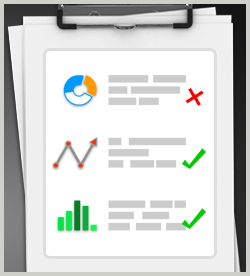KnowledgeCenters Six Sigma KnowledgeCenter Six Sigma Courses
In the Analyze phase of the DMAIC methodology, a Six Sigma team begins to analyze the root causes of the problems that it identified in the earlier stages. This analysis may require churning out huge volumes of data of different types. Sometimes this data is of a multivariate nature, meaning that many dependent and independent variables need to be considered simultaneously. As such, Six Sigma teams often use advanced multivariate tools to manage this type of data. Another set of advanced statistical analysis tools used in this phase is nonparametric tests. In conventional hypothesis tests â called parametric tests â a sample statistic is obtained to estimate a population parameter and hence requires a number of assumptions to be made about the underlying population, such as the normality of data. However, a nonparametric test is used when some of these assumptions, such as normality of data, cannot be safely made.
This course deals with multivariate and categorical data analysis tools such as factor analysis, discriminant analysis, and multiple analysis of variance (MANOVA). The course also aims to familiarize learners with approaches for analyzing nonparametric data, particularly the use of Kruskal-Wallis and Mann-Whitney tests for validating hypotheses. This course is aligned with the ASQ Certified Six Sigma Black Belt certification exam and is designed to assist learners as part of their exam preparation. It builds on foundational knowledge that is taught in 's ASQ-aligned Green Belt curriculum.
This course deals with multivariate and categorical data analysis tools such as factor analysis, discriminant analysis, and multiple analysis of variance (MANOVA). The course also aims to familiarize learners with approaches for analyzing nonparametric data, particularly the use of Kruskal-Wallis and Mann-Whitney tests for validating hypotheses. This course is aligned with the ASQ Certified Six Sigma Black Belt certification exam and is designed to assist learners as part of their exam preparation. It builds on foundational knowledge that is taught in 's ASQ-aligned Green Belt curriculum.
| Objectives |
|---|
Multivariate Tools
Nonparametric Tests in Six Sigma
|


